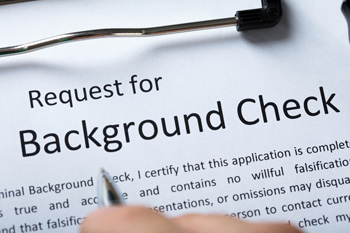Workplace Violence
- Get Prepared
- Emergencies
- Current: Workplace Violence
The term “workplace violence” includes many behaviors, such as threats, harassment and intimidation, as well as physical violence and homicide. Overall, according to the Occupational Safety and Health Administration (OSHA), nearly 2 million American workers are victims of some form of workplace violence every year. Most incidents that employees and managers deal with are assaults, domestic violence, stalking, threats, harassment and physical or emotional abuse.
Workplace Violence Safety Tips
Quick Tips
- Watch for the warning signs and quiet calls for help; take reasonable actions.
- Maintain a reasonable distance from the aggressor.
- Avoid physical retaliation unless it is the last resort for self-defense.
- Report violent incidents to the local police promptly.
- Alert supervisors to any concerns about safety or security, and report all incidents immediately in writing.

Four Types of Workplace Violence
- Type 1: Violent acts by criminals who have no other connection with the workplace but enter to commit robbery or another crime
- Type 2: Violence directed at employees by customers, clients, patients, students, inmates or others for whom an organization provides services
- Type 3: Violence against coworkers, supervisors or managers by a present or former employee
- Type 4: Violence committed in the workplace by someone who doesn’t work there but has a personal relationship with an employee — an abusive spouse or domestic partner

Warning Signs of Coworker Violence
The following behaviors could indicate a need for concern and further investigation:
- Exhibiting emotional instability or irrational behavior
- Undergoing profound personality changes
- Feeling victimized by supervisors or the entire organization
- Making threats or alluding to acts of workplace violence
- Exhibiting signs of extreme paranoia, depression or stress
- Displaying behavior inappropriate to the situation at hand
- Slamming doors, or banging or throwing equipment, tools
- Exhibiting signs of drug or alcohol abuse

Warning Sign Levels and Suggested Actions
Level One (Early Warning)
The person is showing intimidating, disrespectful, uncooperative or verbally abusive behavior.
- Report concerns to a supervisor to seek help in assessing and responding to the situation.
- Document the behavior in question.
Level Two (Situational Escalation)
The person argues with others, sees themselves as a victim, refuses to obey agency policies, sabotages or steals property, or verbalizes or writes threats to co-workers.
- If warranted, call 911 and secure personal safety and the safety of others.
- Document the observed behavior in question.
Level Three (Extreme Escalation)
The person displays intense anger resulting in suicide threats, physical fights, destruction of property or the utilization of weapons to harm others.
- Call 911 immediately.

For Victims During Incidents
- Never put personal safety at risk.
- Maintain a reasonable distance from the aggressor.
- Avoid any sudden movements or any seemingly threatening gestures, such as pointing.
- Avoid physical retaliation unless it is the last resort for self-defense.

For Employees and Employers After an Incident
Employees
- Report violent incidents to the local police promptly.
- Alert supervisors to any concerns about safety or security, and report all incidents immediately in writing. Stay calm, providing short answers. Speak clearly and slowly.
- Take notes about each episode of violence: date, time, place, behavior (whether you were alone or isolated, humiliating remarks, injustice, abuse, etc.) and names of witnesses.
Employers
- Discuss the circumstances of the incident with staff members.
- Set up measures to help the victim(s) take control and go back to work.
- Keep a record of all workplace violence incidents in the organization.
- Strengthen existing prevention measures after determining how and why the workplace violence occurred despite prevention measures.

Preventing Workplace Violence
- Watch for the warning signs and quiet calls for help; take reasonable actions.
- Conduct background screenings for all new employees.
- Plan for workplace violence like any other threat.
- Work with experts to develop and implement policies and procedures for dealing with potentially dangerous employees, and develop and promote employee wellness programs.
